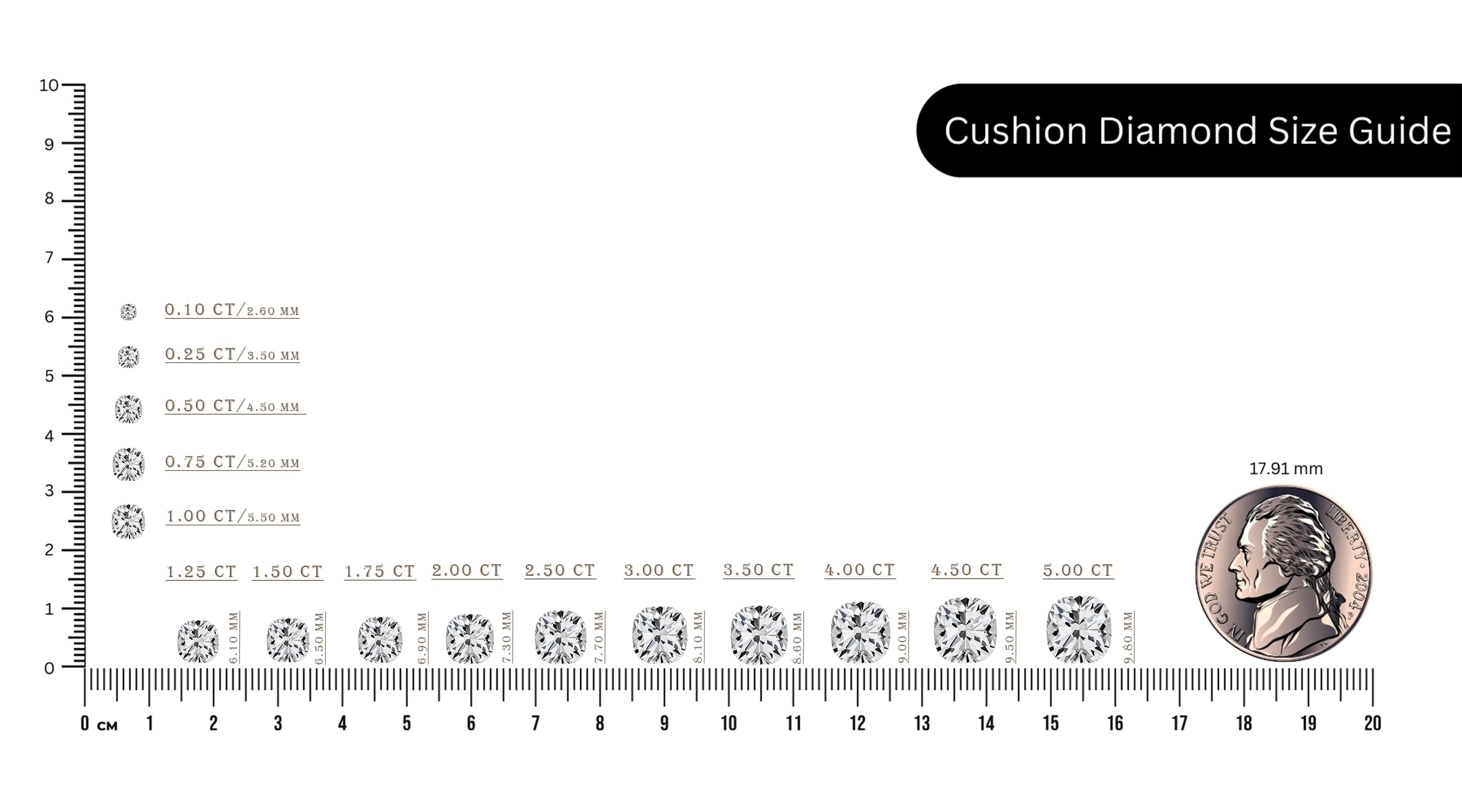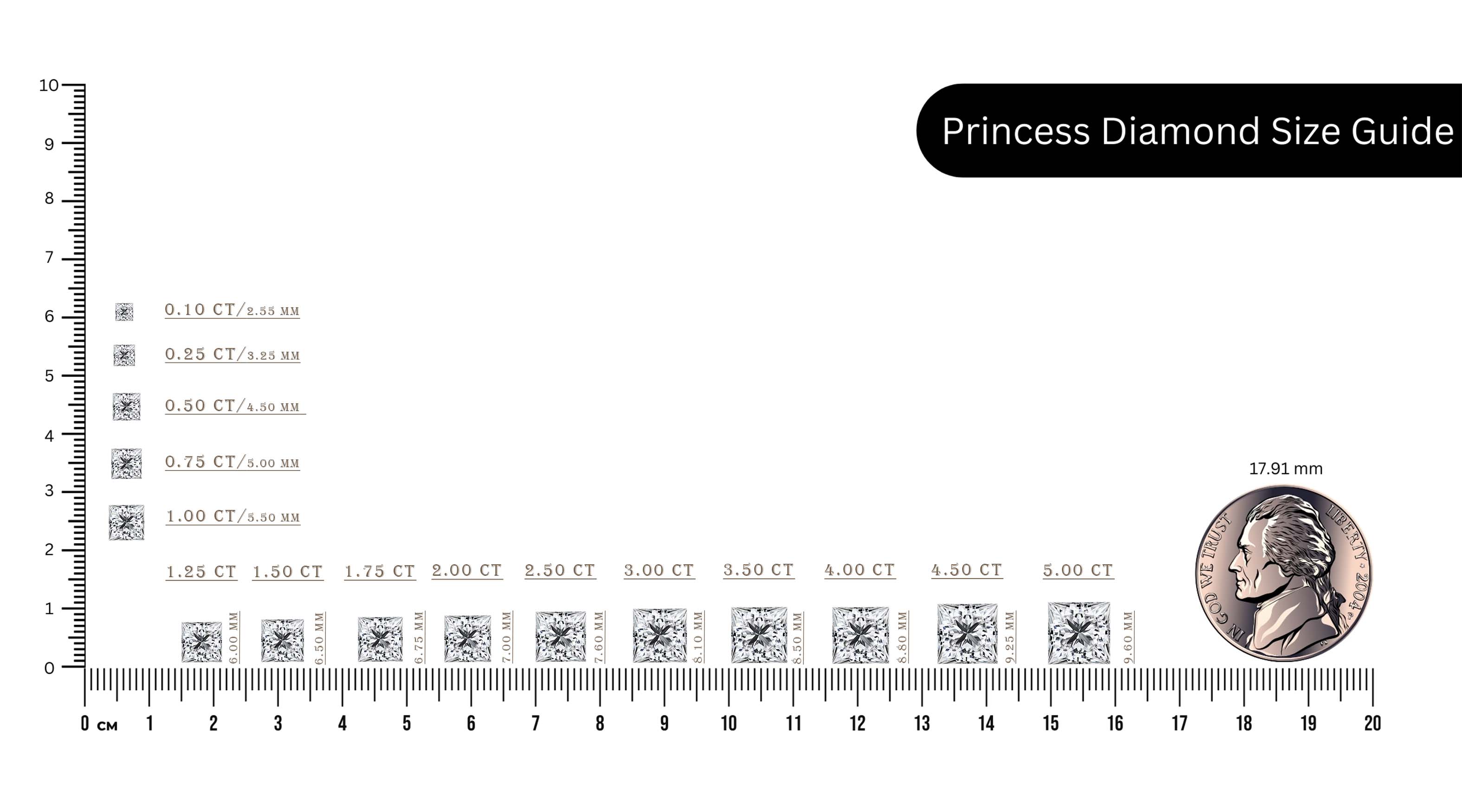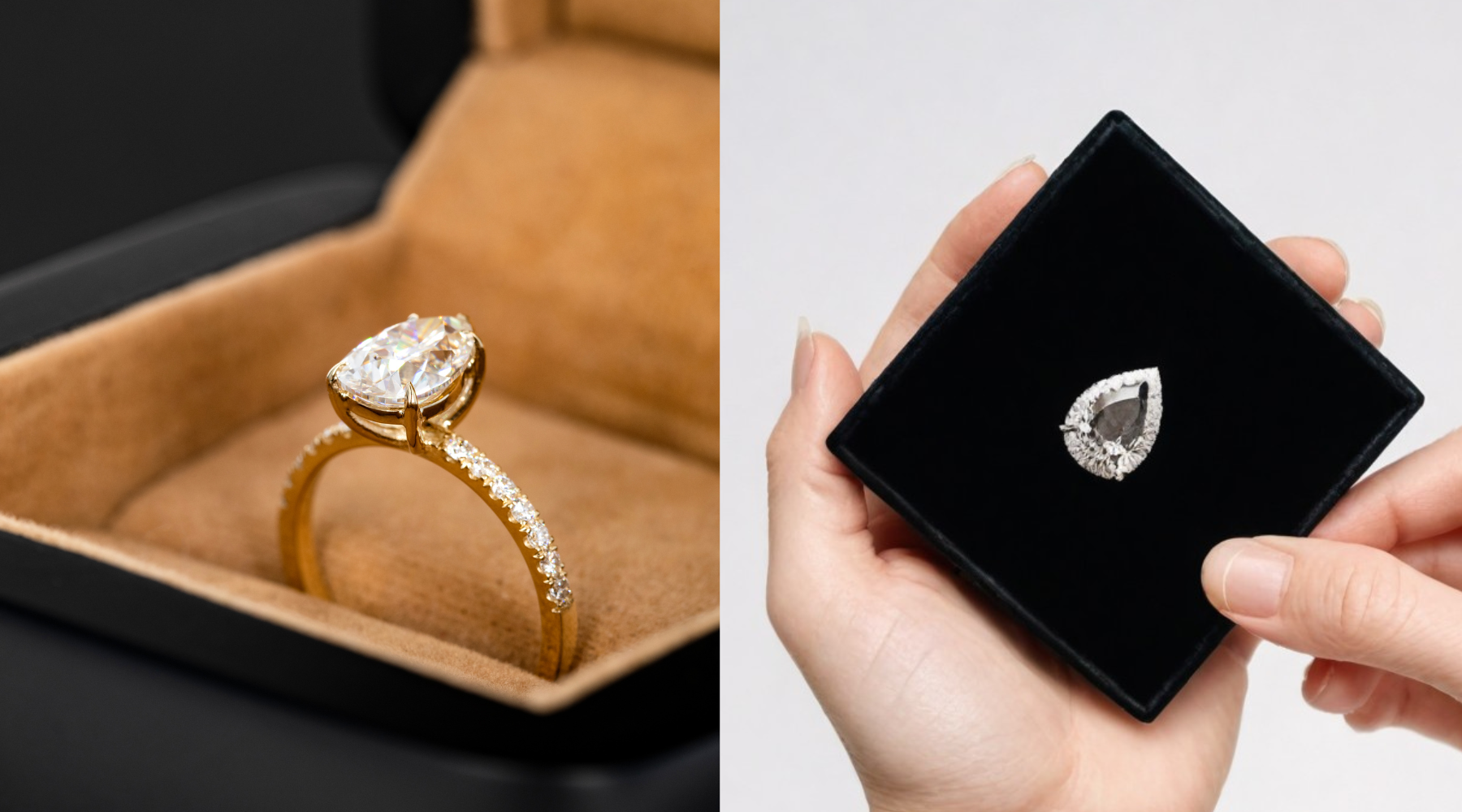
The Ultimate Guide: Cushion Cut Diamond Sizes
The cushion cut is soft-shaped and is loved by many for its shape, which resembles a pillow. They have been loved for centuries, and to date, they are used commonly. For several decades, this cushion-cut diamond has been highly and high among females owing to its subtle softness in appearance. Besides, the cushion cut has made remarkable progress in the global industry due to its brilliance.
However, determining the size of the cushion-cut diamond is not easy. There are several factors that you need to understand before choosing any jewelry in Cushion Cut. Moreover, it is important that you understand the various other aspects so that you don’t have much trouble choosing the right pick. In other diamond shapes, the size of the diamond may not differ from the weight, but the cushion cut may vary. Here, you will learn everything that you wanted to know about the cushion cut diamond size.
Key Takeaways
|
What Is a Cushion Cut Diamond?
A cushion-cut diamond is a diamond that has a square or rectangular shape with rounded corners that somewhat make it look like a cushion or a pillow. This cut has approximately 58 facets or small flat tables, which make it glow and look expensive. The shape of the cushion cut is also very similar to the older styles of cuts, but at the same time, it can combine the classic element with new trends, which is why it is one of the favorite choices of many people.
Understanding Diamond Size vs. Carat Weight
When you go to make a purchase in the diamond industry, you come across various terminologies, which can be quite confusing at times. Hence, it is very important that you are clear about the differences between diamond size and carat weight.
Thus, in regards to diamonds, when people discuss carat weight, they generally mean just how many carats the diamond in question is. But actually, the carat weight does not determine the size of the diamonds and how big they will appear. This is more evident when discussing cushion-cut diamonds.
For example, cut as well as shape make a 1-carat cushion cut diamond seem smaller compared to a 1-carat cut diamond due to different features that influence the grooming light.
When selecting a cushion-cut diamond, it’s helpful to consider the size in MM for the purpose of comparing the size of the stone when set around other large diamonds. The size in MM helps you understand how huge the diamond will be on your hand compared to the size in millimeters.
Cushion Cut Diamond Size Chart
Below is a simple chart that shows the size of cushion cut diamonds in millimeters (MM) and their corresponding carat weight. When you are making any purchase, whether on the online or offline market, these details can help you a lot. This chart will help you visualize how big a cushion cut diamond will look on your hand:
Cushion MM Size |
Cushion carat Weight |
|---|---|
| 1.90 - 2.00 mm | 0.04 - 0.05 ct |
| 2.10 - 2.20 mm | 0.05 - 0.06 ct |
| 2.30 - 2.40 mm | 0.07 - 0.08 ct |
| 2.50 - 2.60 mm | 0.09 - 0.10 ct |
| 2.70 - 2.80 mm | 0.11 - 0.12 ct |
| 2.90 - 3.00 mm | 0.13 - 0.15 ct |
| 3.10 - 3.20 mm | 0.16 - 0.18 ct |
| 3.20 - 3.40 mm | 0.20 - 0.22 ct |
| 3.50 - 3.60 mm | 0.23 - 0.26 ct |
| 3.70 - 3.80 mm | 0.28 - 0.31 ct |
How Cushion Cut Diamond Size Affects Appearance?
The size of a diamond, particularly when cut in cushion style, can really affect its appearance and feel on the ring finger. Diamonds that are of a cushion cut that is smaller than 1 carat will also look largely inconspicuous. These are perfect if you do not consider yourself an extrovert and you do not like things loud and flashy.
Larger cushion cut diamonds, on the other hand, are bold, especially where the diamonds are over 2 carats. They stand out and are ideal if you want your diamond to be the center of attention. However, larger diamonds also tend to be more expensive, so it's important to balance size with your budget.
Evaluation of a Cushion Cut Diamond
|
Cushion Cut Diamond |
EXCELLENT |
VERY GOOD |
GOOD |
FAIR |
POOR |
|
Table % |
61 - 67 |
58 - 60 or 68 - 70 |
56 - 57 or 71 |
54 - 55 or 72 - 73 |
< 54 or > 73 |
|
Depth % |
61 - 67 |
58 - 60.9 or 67.1 - 70 |
56 - 57.9 or 70.1 - 71 |
54 - 55.9 or 71.1 - 73 |
< 54 or > 73 |
|
Girdle |
Very Thin - Slightly Thick |
Very Thin to Thick |
Very Thin to Very Thick |
Ex. Thin to Ex. Thick |
|
|
Culet |
None |
Very Small |
Small |
Medium |
> Medium |
Popular Cushion Cut Diamond Shapes
Due to increasing demand in this field, there has been a lot of innovation when it comes to the shape of the Cushion Cut Diamonds. They are being designed in different shapes for distinctive occasions. Cushion cut diamonds come in square and rectangular shapes. The shape you choose can make the diamond look bigger or smaller.
Square Cushion Cut: This shape is almost as wide as it is long. It looks balanced and even. Many people like this shape for its symmetry. When you are trying to create a look that demands a lot of dimensions, then this square cushion cut diamond piece can be a really magical choice.
Rectangular Cushion Cut: This shape is longer than it is wide. It can make the diamond look larger on your finger because of its length. It is also having a huge fanbase among the working women. This set looks really wonderful when paired up with formal blazers and suits. This can be an excellent pair-up when it comes to an official meeting.
You can pick the shape you like best. Both shapes are beautiful. Both can look great in the right setting.
|
Cushion Cut Diamond - Length to Width Guide |
EXCELLENT |
VERY GOOD |
GOOD |
FAIR |
POOR |
|
Square |
1.00 - 1.03 |
1.04 - 1.05 |
1.06 - 1.08 |
> 1.08 |
|
|
Rectangle |
1.15 - 1.20 |
1.10 - 1.14 or 1.21 - 1.30 |
1.08 - 1.09 or 1.31 - 1.50 |
< 1.08 or > 1.50 |
|
Cushion Cut Clarity Guide
|
Cushion Cut Diamond - Clarity Guide |
EXCELLENT |
VERY GOOD |
GOOD |
FAIR |
POOR |
|
< .50 ct. |
FL - VS2 |
SI1 - SI2 |
I1 |
I2 |
> I2 |
|
.51 - 1.0 ct. |
FL - VS1 |
VS2 - SI1 |
SI2 |
I1 - I2 |
> I2 |
|
1.0 - 2.0 ct. |
FL - VVS2 |
VS1 - VS2 |
SI1 - SI2 |
I1 |
> I1 |
|
> 2.0 ct. |
FL - VVS2 |
VS1 - VS2 |
SI1 |
SI2 |
> SI2 |
Final Words
By now, you must have gained a basic understanding of what a cushion-cut diamond is. You will find all of this information to be really helpful when you make a purchase. First, check the details claimed by the dealer and then, based on your knowledge, verify the authenticity of these claims.
FAQs
1. What is a cushion-cut diamond?
It's a diamond with a square or rectangular shape and rounded corners.
2. Does a cushion-cut diamond look bigger in a rectangular shape?
Yes, the rectangular shape can make the diamond appear larger.
3. What clarity grade is good for a cushion cut diamond?
A VS2 or SI1 clarity grade is often recommended for cushion-cut diamonds.










